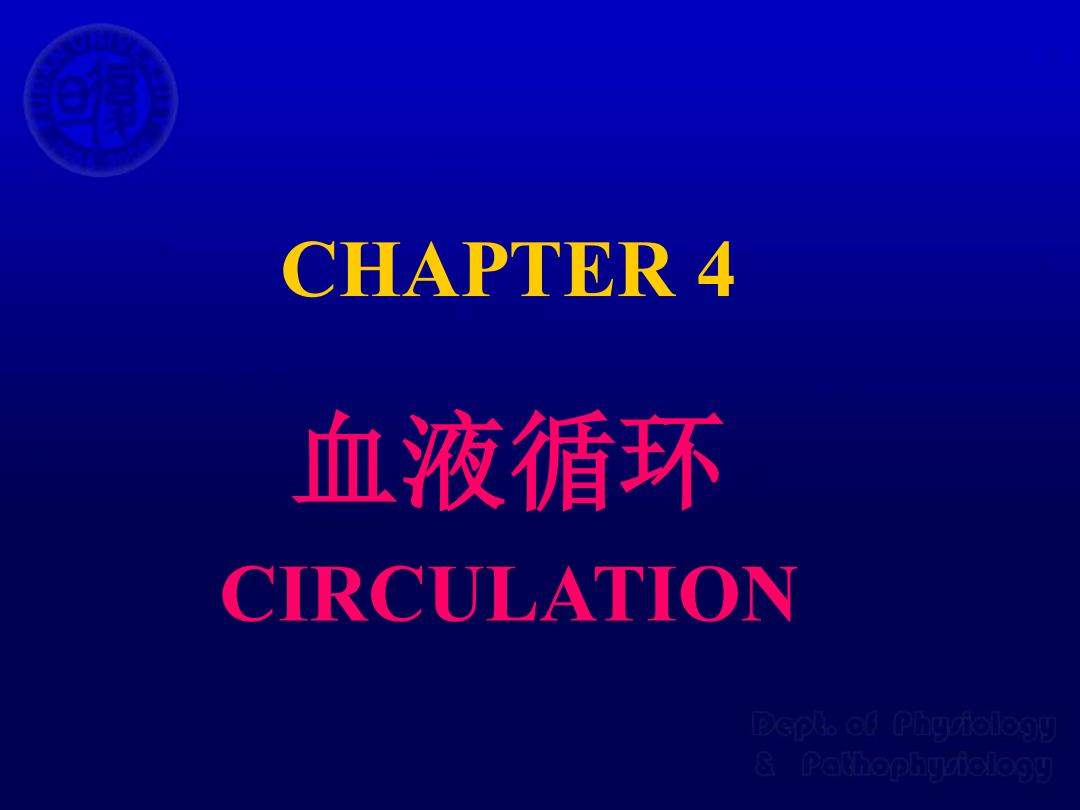
CHAPTER 4 血液循环 CIRCULATION Depl。of Physiclogy Pathophysiclogy
CHAPTER 4 血液循环 CIRCULATION
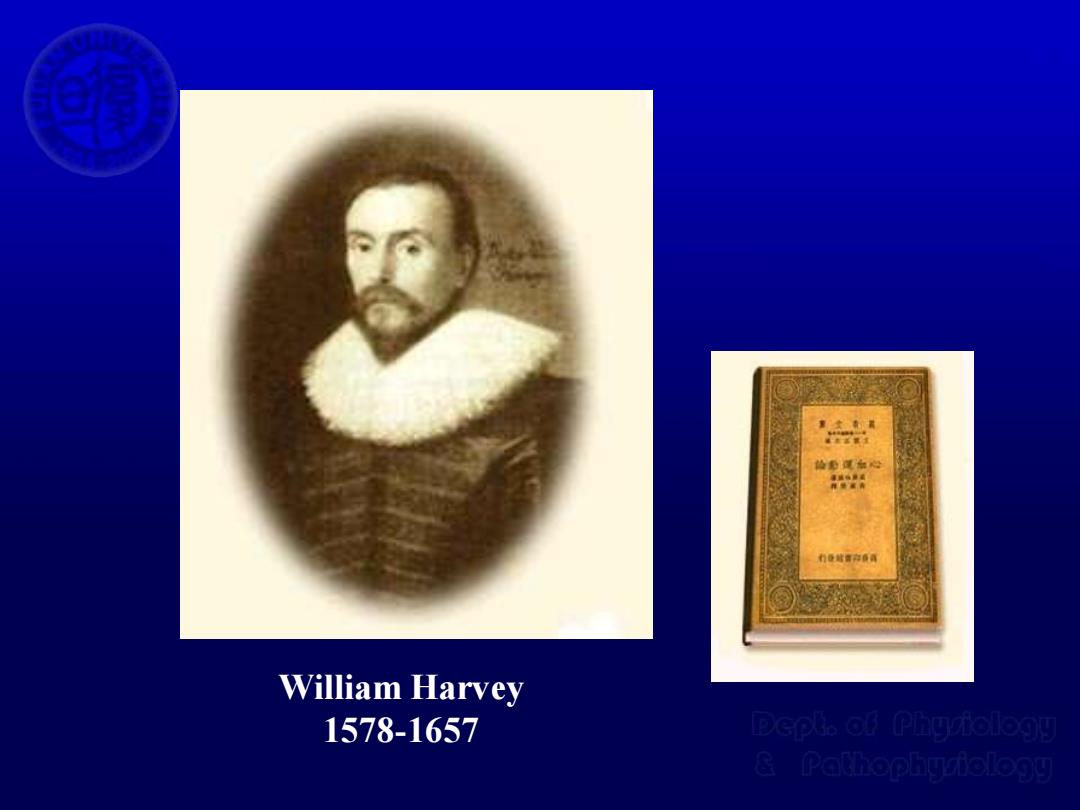
9 William Harvey 1578-1657 Depl.of Phugicloa! Pathophysiology
William Harvey 1578-1657
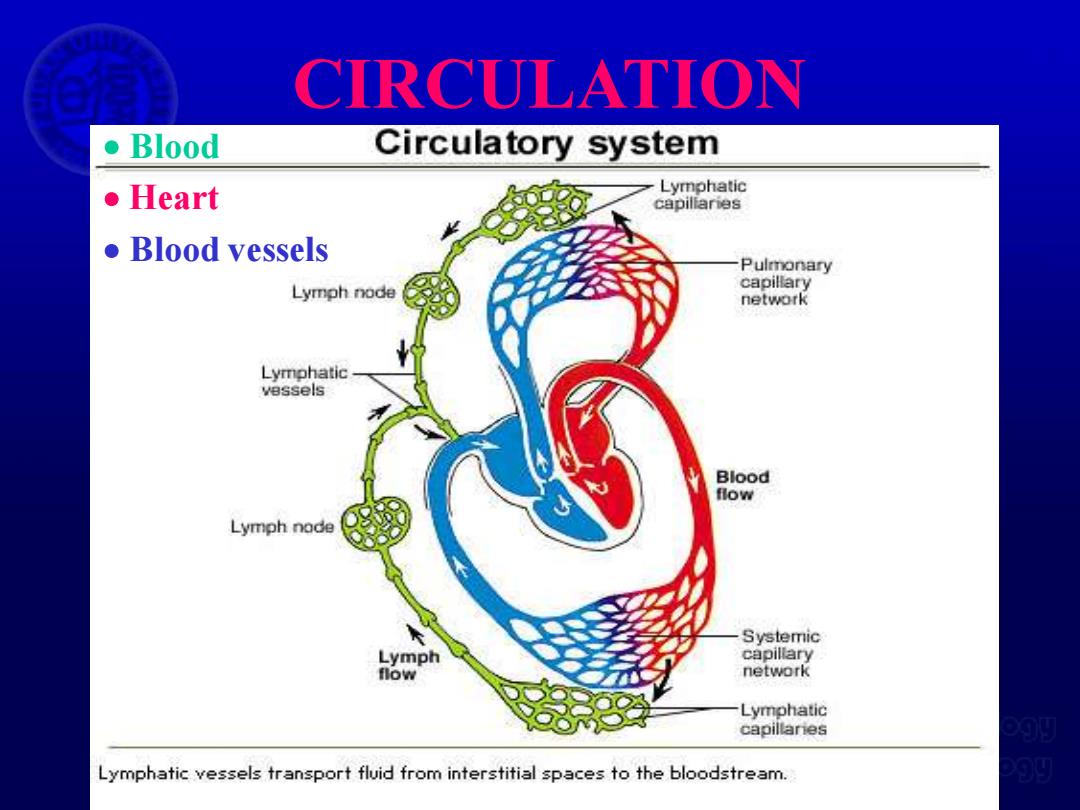
CIRCULATION ●Blood Circulatory system ●Heart ●Blood vessels -Pulmonary Lymph node Lymph node Lymphatic vessels transport fluid from interstitial spaces to the bloodstream
CIRCULATION • Blood • Heart • Blood vessels
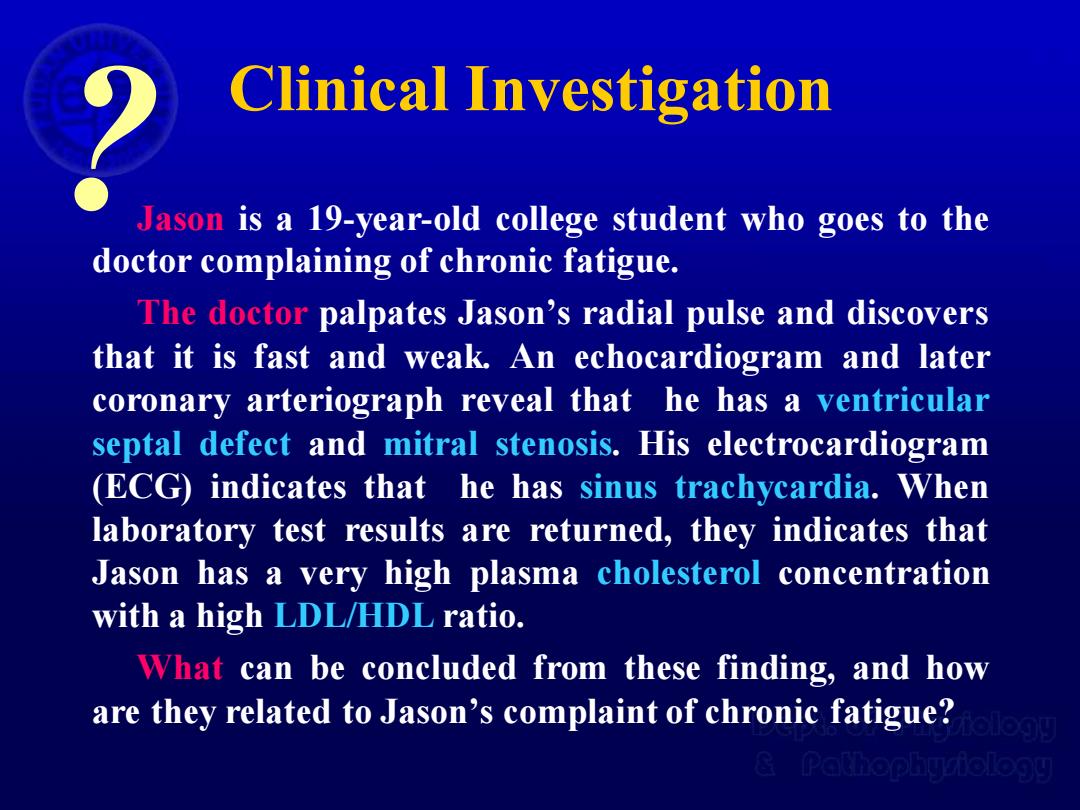
Clinical Investigation Jason is a 19-year-old college student who goes to the doctor complaining of chronic fatigue. The doctor palpates Jason's radial pulse and discovers that it is fast and weak.An echocardiogram and later coronary arteriograph reveal that he has a ventricular septal defect and mitral stenosis.His electrocardiogram (ECG)indicates that he has sinus trachycardia.When laboratory test results are returned,they indicates that Jason has a very high plasma cholesterol concentration with a high LDL/HDL ratio. What can be concluded from these finding,and how are they related to Jason's complaint of chronic fatigue?
Clinical Investigation Jason is a 19-year-old college student who goes to the doctor complaining of chronic fatigue. The doctor palpates Jason’s radial pulse and discovers that it is fast and weak. An echocardiogram and later coronary arteriograph reveal that he has a ventricular septal defect and mitral stenosis. His electrocardiogram (ECG) indicates that he has sinus trachycardia. When laboratory test results are returned, they indicates that Jason has a very high plasma cholesterol concentration with a high LDL/HDL ratio. What can be concluded from these finding, and how are they related to Jason’s complaint of chronic fatigue? ?
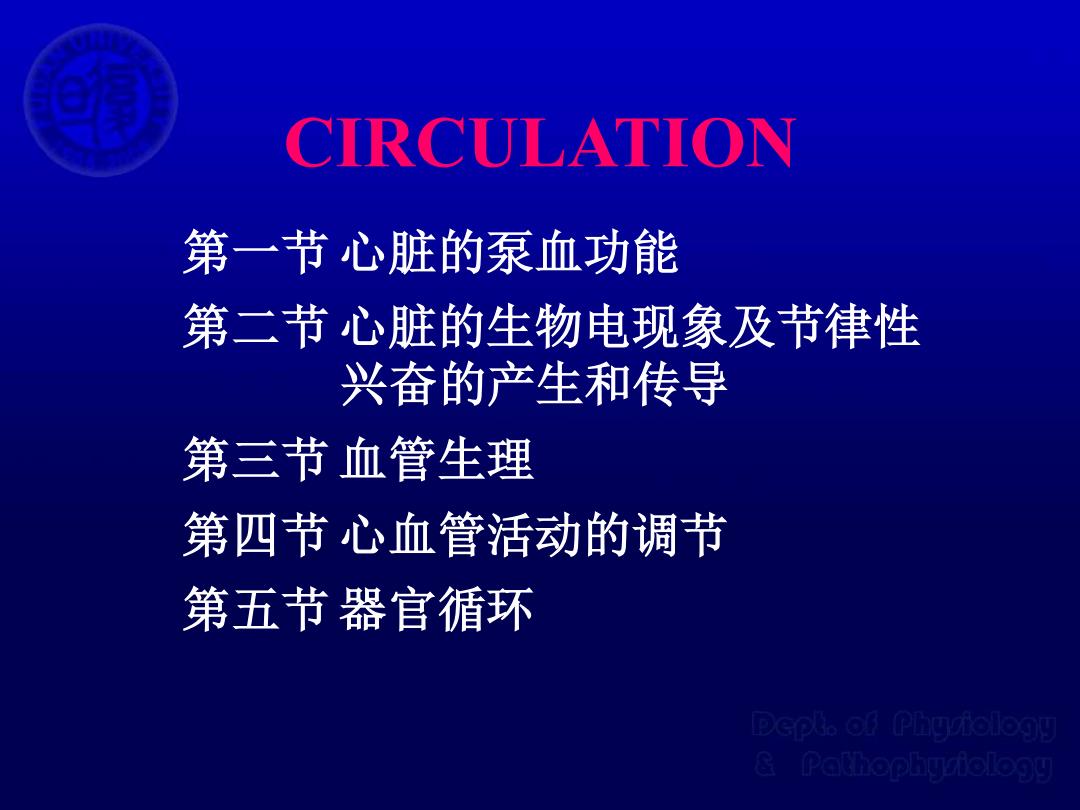
CIRCULATION 第一节心脏的泵血功能 第二节心脏的生物电现象及节律性 兴奋的产生和传导 第三节血管生理 第四节心血管活动的调节 第五节器官循环 Depl.of Phyicloa! Pathophysiology
CIRCULATION 第一节 心脏的泵血功能 第二节 心脏的生物电现象及节律性 兴奋的产生和传导 第三节 血管生理 第四节 心血管活动的调节 第五节 器官循环
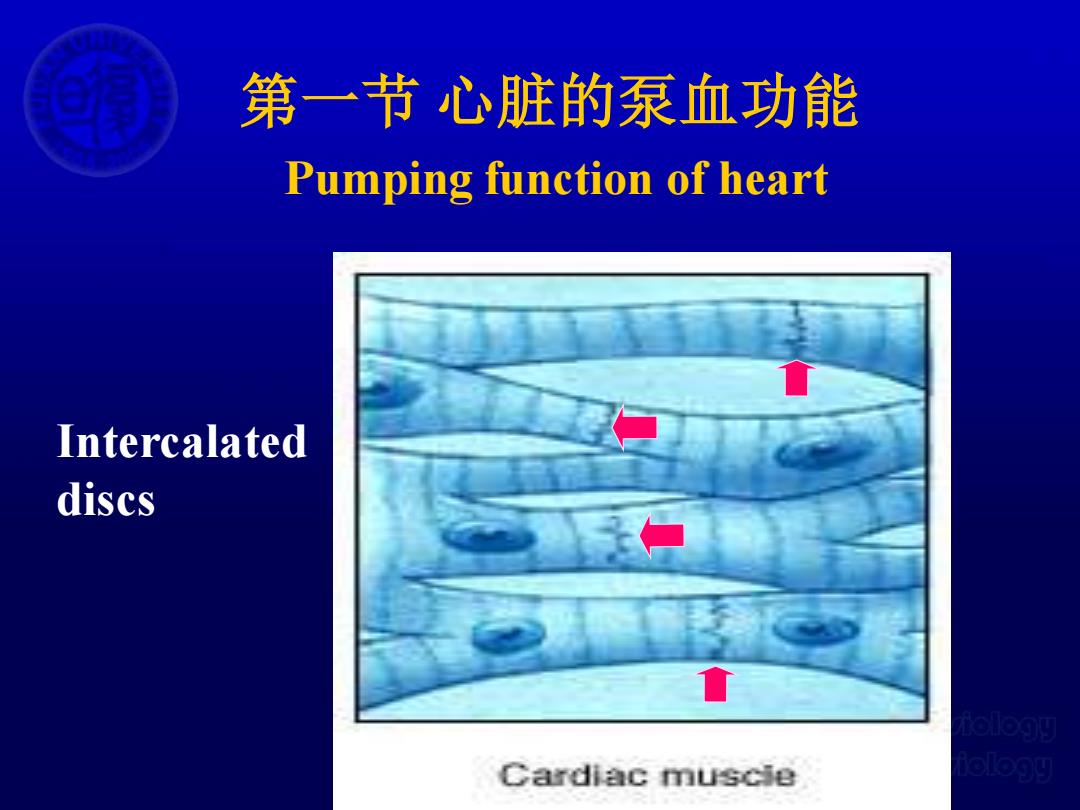
第一节心脏的泵血功能 Pumping function of heart Intercalated discs Cardiac muscie
第一节 心脏的泵血功能 Pumping function of heart Intercalated discs

第一节心脏的泵血功能 Heart AnteriorView of the Heart Anterior cardiac veins Aorta Circumflex artery Great cardiac vein Inferior vena cava Left coronary artery Left ventricle igamentum arteriosum Marginal artery Pulmonary trunk Right atrium Right coronary artery Right ventricle Small cardiac vein Superior vena cava
第一节 心脏的泵血功能

第一节心脏的泵血功能 心肌收缩的特点 >对细胞外液Ca+的依赖性 >“全或无”收缩 >不发生完全强直收缩 Depl.of Phugiclog! Pathophusiology
第一节 心脏的泵血功能 心肌收缩的特点 ➢对细胞外液Ca2+的依赖性 ➢“全或无” 收缩 ➢不发生完全强直收缩
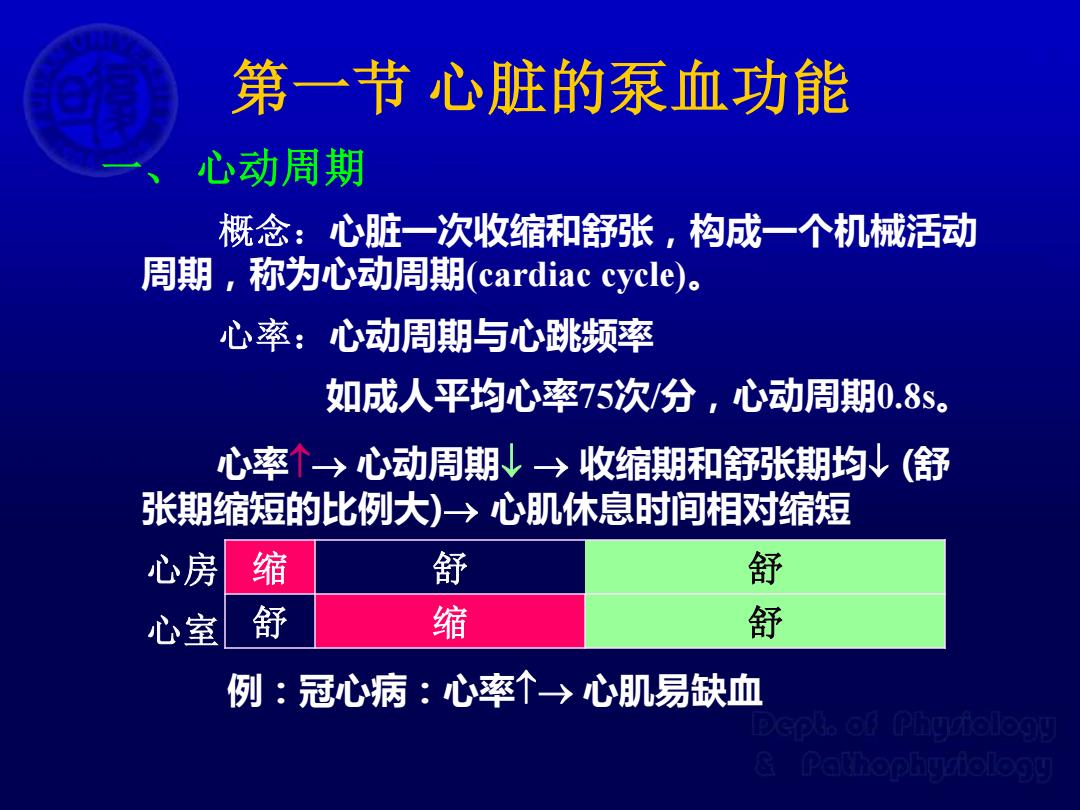
第一节心脏的泵血功能 心动周期 概念:心脏一次收缩和舒张,构成一个机械活动 周期,称为心动周期(cardiac cycle)。 心率:心动周期与心跳频率 如成人平均心率75次/分,心动周期0.8s。 心率↑-→心动周期↓→收缩期和舒张期均↓(舒 张期缩短的比例大)→心肌休息时间相对缩短 心房缩 舒 舒 心室舒 缩 舒 例:冠心病:心率个→心肌易缺血 o。o0 Phuioloa! Pathophuziclogy
第一节 心脏的泵血功能 一、 心动周期 概念:心脏一次收缩和舒张,构成一个机械活动 周期,称为心动周期(cardiac cycle)。 心率:心动周期与心跳频率 如成人平均心率75次/分,心动周期0.8s。 心率→ 心动周期 → 收缩期和舒张期均 (舒 张期缩短的比例大)→ 心肌休息时间相对缩短 心房 心室 例:冠心病:心率→ 心肌易缺血 缩 舒 舒 舒 缩 舒
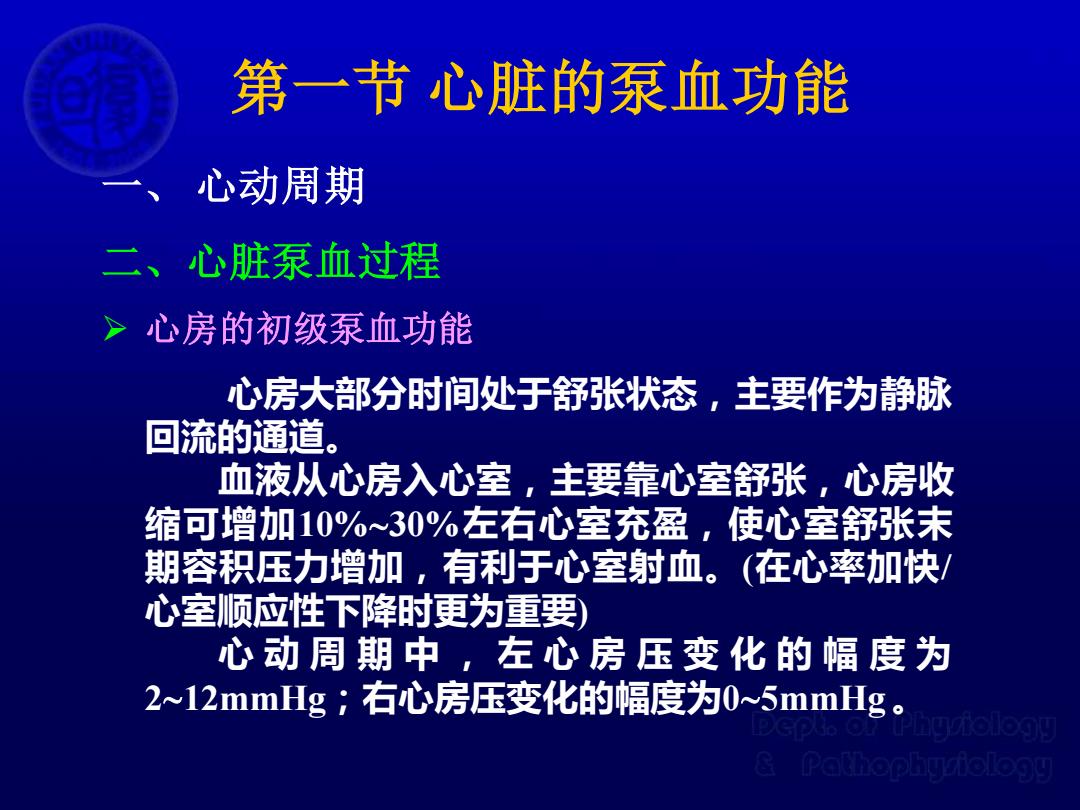
第一节心脏的泵血功能 心动周期 二、 心脏泵血过程 >心房的初级泵血功能 心房大部分时间处于舒张状态,主要作为静脉 回流的通道。 血液从心房入心室,主要靠心室舒张,心房收 缩可增加10%~30%左右心室充盈,使心室舒张末 期容积压力增加,有利于心室射血。(在心率加快/ 心室顺应性下降时更为重要) 心动周期中,左心房压变化的幅度为 2~12mmHg;右心房压变化的幅度为0~5mmHg
第一节 心脏的泵血功能 一、 心动周期 二、心脏泵血过程 ➢ 心房的初级泵血功能 心房大部分时间处于舒张状态,主要作为静脉 回流的通道。 血液从心房入心室,主要靠心室舒张,心房收 缩可增加10%30%左右心室充盈,使心室舒张末 期容积压力增加,有利于心室射血。(在心率加快/ 心室顺应性下降时更为重要) 心 动 周 期 中 , 左 心 房 压 变 化 的 幅 度 为 212mmHg;右心房压变化的幅度为05mmHg